As purveyor of the benchmark overlander motorcycle, BMW Motorrad strives to provide a motorcycle for every rider and every occasion. This is perhaps exemplified by its trio of four-cylinder litre bikes, the BMW Motorrad S 1000 RR superbike, the S 1000 R naked sports and the S 1000 XR sports-tourer, priced at RM100,875, RM82,006 (for 2018 model year) and RM99,930, respectively, with zero-rated GST.
Some may accuse BMW Motorrad of chasing every single market niche there is, and truth be told, several other manufacturers have followed suit, notably Ducati, and now, even Harley-Davidson. Say what you want about the boys from Munich, they do produce very competent motorcycles.
This is not to say German motorcycles don’t have any faults, they do indeed. Anyone who says otherwise is deluding themselves, and the author has had first-hand experience with some of BMW’s finest going back to the first K-series bikes.
Of course BMW Motorrad is known for its boxer engine, which has survived into the modern age and found a home in a range of sports and touring bikes. But, BMW’s four-cylinder S-series machines are sold alongside the twins, covering some of the same market segments.
So, BMW Motorrad messaged us asking if we wanted to take all three S bikes for a spin, but could the author handle all three at once? Let’s just say new helmets were purchased specifically for this review.
With three different frame configurations, it is immediately obvious this trio is designed to do completely different things. However, all three do have one thing in common, they all exhibit proper sports bike handling.
Since the engine is common amongst this threesome, let’s begin there. The liquid-cooled, inline-four comes with 16-valves with dual overhead cams and displaces 999 ccc, the S 1000 RR having titanium valves and variable intake tracts.
Power outputs are naturally different with the S 1000 RR producing 199 hp at 13,500 rpm and 113 Nm at 10,500 rpm. The naked sports S 1000 R puts out 160 hp at 11,000 rpm and 112 Nm of torque at 9,250 rpm while the S 1000 XR has 165 hp at 11,000 rpm and 114 Nm of torque at 9,250 rpm under its belt.
All three S-series bikes carry a six-speed gearbox driving a chain, and final drive is identical at 17/45 sprockets. The RR and R are geared identically internally, while the XR carries a slightly taller sixth gear.
As can be surmised from a perusal of the numbers, all three S-series machines are capable of travelling at “over 200 km/h” in BMW’s words. However, as we were to find out, riding behaviour is completely different between the bikes, using the words of an old engineer and good friend, “fit for purpose.”
Where the S bikes start to diverge is in the equipment fit-out, notably in terms of suspension and braking. As befits its top-of-the-line superbike status, the S 1000 RR comes with electronic suspension, which BMW Motorrad calls Dynamic Damping Control (DDC).
This is complemented with twin Brembo brake callipers in clamping 320 mm diameter discs in front. In practice, brake modulation on the S 1000 RR is supremely controllable and precise, with feedback being positive and only a single finger required for hard braking.
Naturally BMW’s ABS is at the forefront of things, with disengageable race mode. Coupled with Dynamic Traction Control (DTC), all this technological wizardry serves to keep the S 1000 RR poised and balanced in corners.
The rider also has the option of three ride modes – Road, Rain and Race – which come as standard. Unlocking the optional performance module also gives Slick mode as well as User, where settings can be adjusted as preferred.
Naturally, getting on the S 1000 RR places the rider in the typical crouched over racing position with the seat height set at 815 mm. Reaching forward for the clip-on handlebars, and they are a bit of a reach for the 1.68 cm tall author, the rider is placed in placed in a head-down, elbows out attack pose.
Coming to the S 1000 R, this naked sports carries a detuned version of the S engine, down some 40 hp with much the same torque figure. However, the way the torque is delivered makes the S 1000 R a lot of fun to ride and causes much stirring in the nether regions.
Where the S 1000 RR delivers power in a rush above 8,000 rpm and kicks the door in all the way to redline, the S 1000 R gets the rider grinning at about 6,000 rpm, and runs out of huff at near 10,000. What readers should realise is most riders will spend time in lower regions of the rev range on the road, and this is where the fun factor is maximised for the S 1000 R.
Seat height on the S 1000 R is set at 814 mm, which doesn’t make much of a difference in terms of leg reach versus the S 1000 RR, but the upright handlebars – the rider is placed in a slight forward cant – makes getting feet down much easier. Less strain is placed on the rider’s back as well.
As for the S 1000 XR, this is where things got a little… weird for the author. Climbing into the 840 mm tall saddle, the rider is put into the standard upright adventure bike touring position, but the XR is not an adventure bike.
What it is is a sports bike with very tall legs, borne out by the 150 mm front and 140 mm rear suspension travel height, versus the 120 mm suspension travel on the RR and R. Despite the adventure bike looks, the S 1000 XR is more a sports-tourer, in the vein of the Ducati Multistrada 1260.
If you’re really looking for pure off-road ability, try elsewhere in BMW Motorrad’s range. We’re pretty sure there is a GS which suits, since the XR is almost purely a road machine.
Riding out on the S bikes, it is immediately obvious that the S 1000 RR is designed for the racetrack. Forgive us for stating the obvious, but it has to be said.
But, saying that, the S 1000 RR is docile enough to be pressed into service as a daily rider, if the rider is willing to swallow the associated cost of fuel and premium rubber. As a motorcycle intended for racing purposes, the handling on the S 1000 RR is super sharp.
The S 1000 RR’s DDC keeps everything rock stable and smooth, even on the dark side of the moon surface the local council calls roads. While not quite reaching the performance level of the suspension on the Yamaha YZF-R1M or Ducati V4 Panigale, the S 1000 RR does, indeed, perform and deliver.
Most riders will have zero complaints about the suspension settings and programming of the S 1000 RR and if you do actually feel the suspension is inadequate, your name had better be Guy Martin. The race crouch position does wear hard on the back after a while, and the S 1000 RR is good for about 240 kilometres or so in range.
This translates to about an hour in the saddle before the little amber warning light comes on, at which point the rider will definitely need a break. For the S 1000 R, as a naked sports bike, this problem does not arise.
As mentioned earlier, the upright seating position with the rider slightly crouched forward is good for long stints in the saddle. The boys from paultan.org proved by taking the S 1000 R for several high speed romps across the states, including one slightly insane ride from Penang to Ipoh in the dead of night.
Riding naked – the bike, not the rider – means that wind blast is an issue, and the S 1000 R provides nothing in the way of wind protection. This necessitates tucking down with the chin on the tank and even then, the strain on neck and shoulders will tire the rider out.
Getting some 300 km from the 17 litre tank, the S 1000 R does perform well as an all-rounder, that inline-four providing lots of low-end torque for quick overtaking. It is not quite the missile the S 1000 RR is, but that isn’t its intended purpose.
If you do indeed feel the need to take the S-series four-cylinder mill for those long-distance trips, then the S 1000 XR will fit the bill, our review unit fitted with the optional hard case luggage. With 163 hp on tap, the XR equals the R for power output, but power is delivered lower down the range, more suited for hauling rider, passenger and luggage across lots of highway miles.
The broad seat cossets the rider, and the fairly broad pillion seat, similar in styling to the BMW Motorrad R 1200 RS, drew no complaints from pillion passengers. Wind protection from the two-position manually adjustable windscreen is good, with a minor buffet coming around the top and sides of the helmet.
In terms of the ride manners, the S 1000 XR behaves much like a taller S 1000 R, which is logical as the engines are almost identical and fuel from the 20-litre tank consumed in about 260 km of fast riding. Vibration, though, reared its ugly head, most noticeably in the R, with the RR showing it in the handlebars.
However, the XR showed none of this, with the ride remaining remarkably vibration free. All three S bikes came equipped with up-and-down quickshifters, with the S 1000 RR benefiting most from this riding aid.
Braking performance with perfectly acceptable for the RR, R and XR, with the RR, again, showing the best braking performance from the radial mounted Brembos. As for the R and XR, braking was similarly good, though not at the level of the RR’s Brembo M4-32s.
inside the cockpit, the S bikes carry almost identical combination analogue/digital instruments, with the readouts being clear and legible. It should be noted the S 1000 RR does not have a fuel gauge in the LCD readout, with the rider having to rely on range to empty from the onboard computer, but it does come with an accelerometer.
All three clusters come with shift lights, and the R and XR have almost identical instruments. The S 1000 XR does come with LED daytime running lights, a feature it shares with its boxer-twin stablemate, the R 1200 RS.
So, who needs a BMW Motorrad S-series motorcycle? The answers are fairly obvious, of course, with the S 1000 RR appealing to the track junkie and speed demon.
For fast highway touring, the S 1000 XR is eminently suited to the role, carrying two in comfort. Lastly, the S 1000 R is a good choice for general all-round motorcycling duties, including fast corner carving when needed.
In terms of current local market choice, the S 1000 RR goes up against the Suzuki GSX-R1000 and Kawasaki ZX-10R. For the XR, its direct competition is the Kawasaki Versys 1000, while the naked sports S 1000 R competes against the Suzuki GSX-S1000 and the Kawasaki Z1000.
For the somewhat short-legged author, while the S 1000 XR did appeal with its comfortable riding position, the tall seat height made the XR a chore to handle in heavy traffic. The S 1000 R did everything with aplomb, and would easily find a place in the author’s stable as a daily runabout, but the ultimate choice went to the S 1000 RR, for its sophisticated suspension and very precise handling manners.
GALLERY: BMW Motorrad S 1000 RR
GALLERY: BMW Motorrad S 1000 R
GALLERY: BMW Motorrad S 1000 XR
Looking to sell your car? Sell it with Carro.

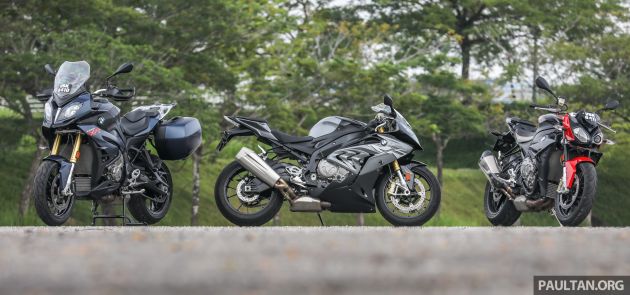
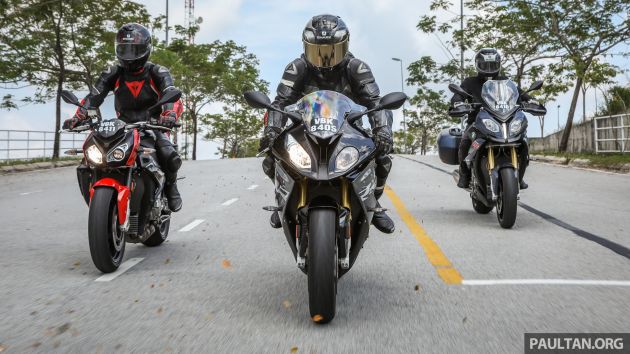






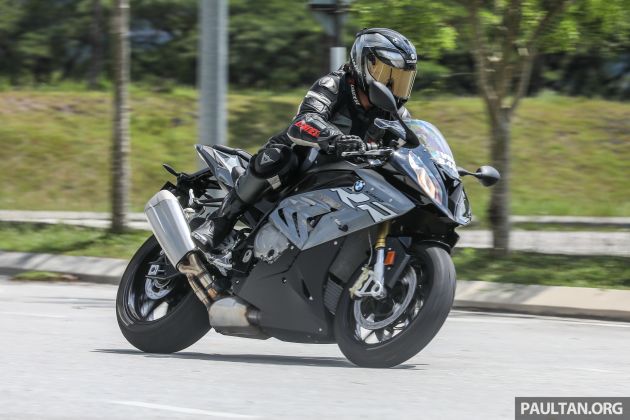






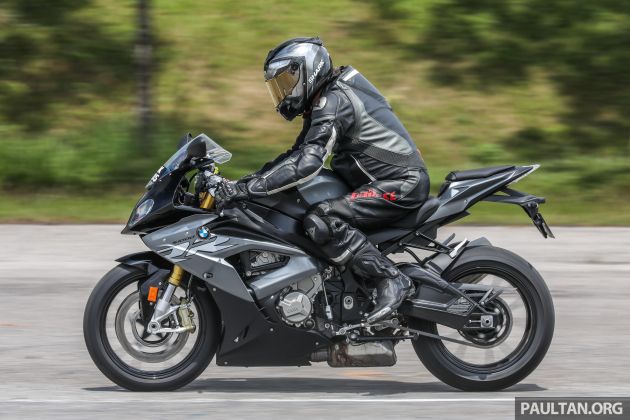
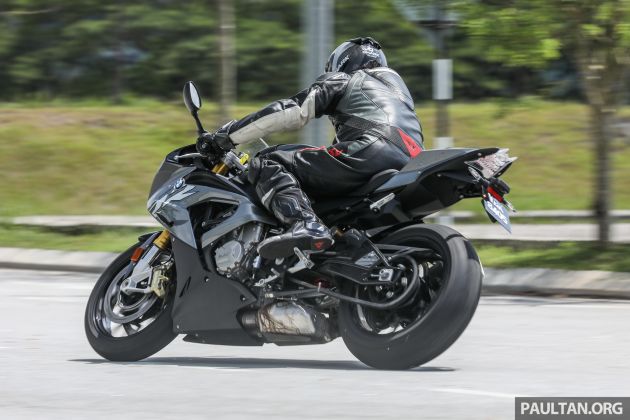
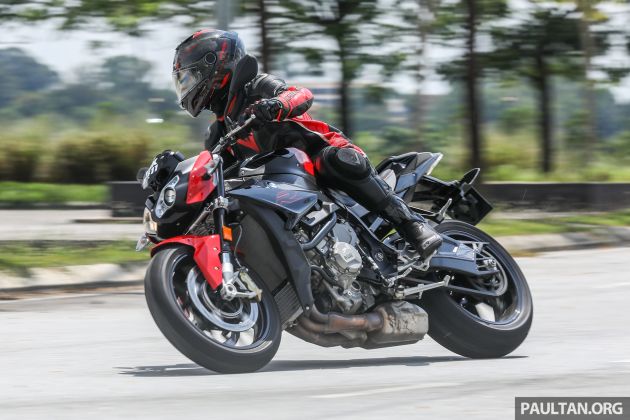
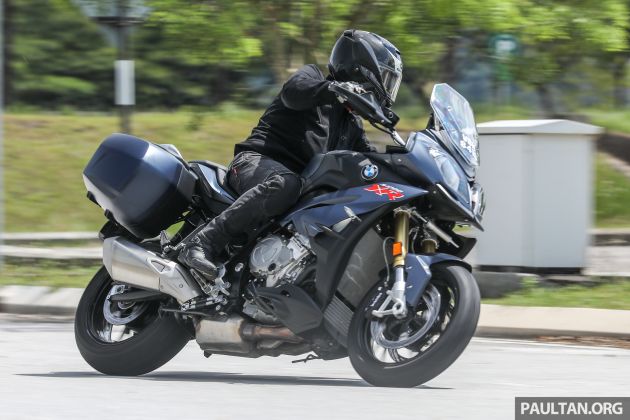



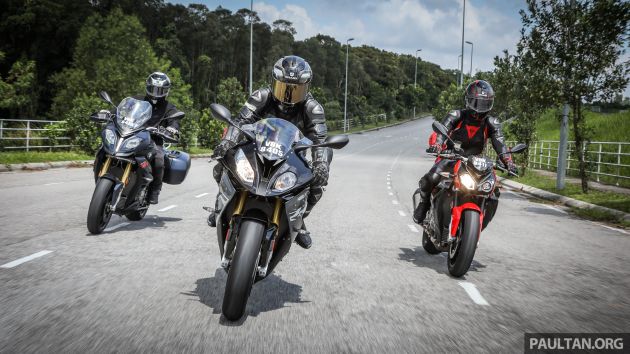
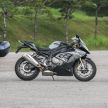
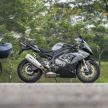
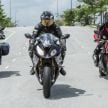
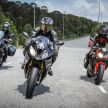

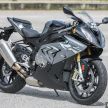
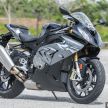
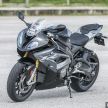
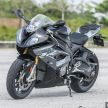
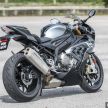
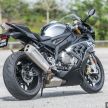
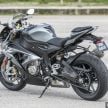
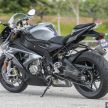
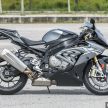
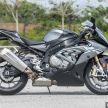
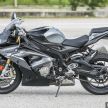
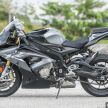
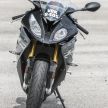
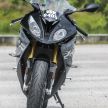
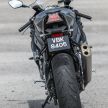
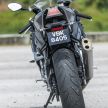
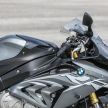
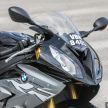
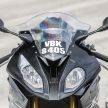
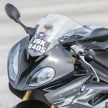
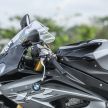
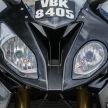
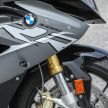
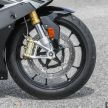

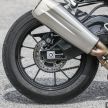
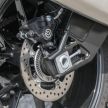
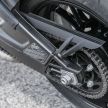
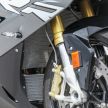
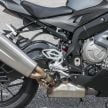

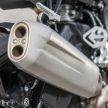
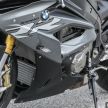
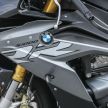
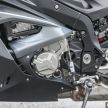
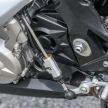
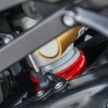
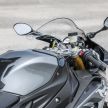

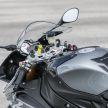
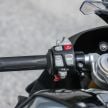
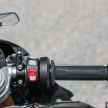
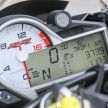
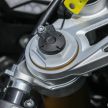
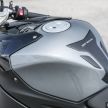

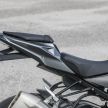
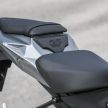
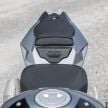
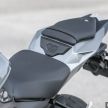
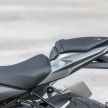
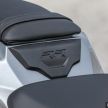

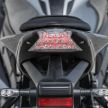
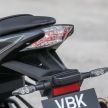


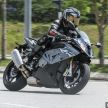
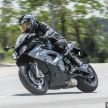
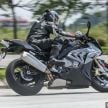
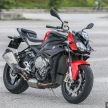
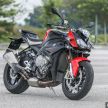
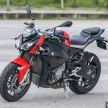
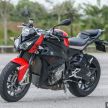
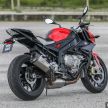
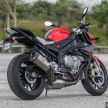
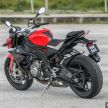
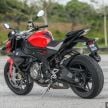
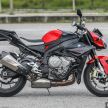
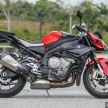
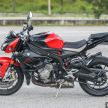
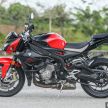
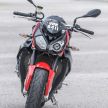
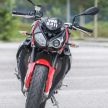
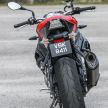
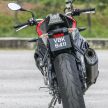
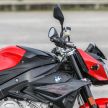
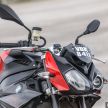


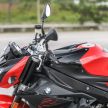
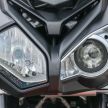
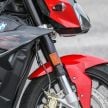
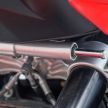
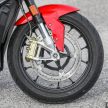
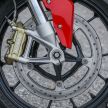
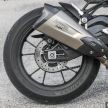
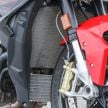
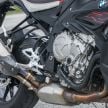
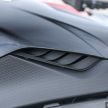
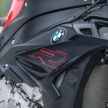

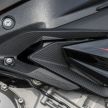
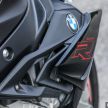
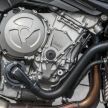
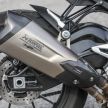
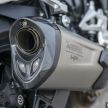
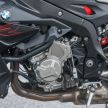
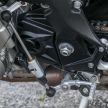

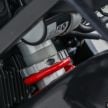
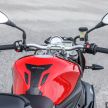
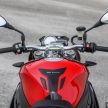
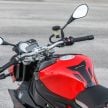
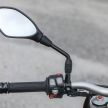
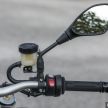
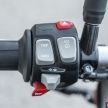
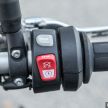

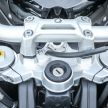

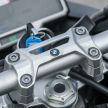
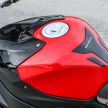
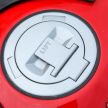
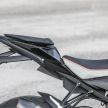
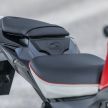
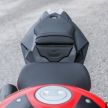
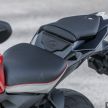
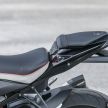
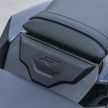

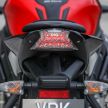
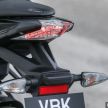
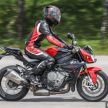
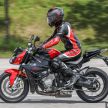

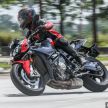

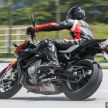
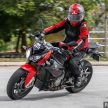
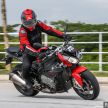
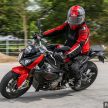
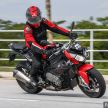
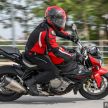
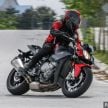





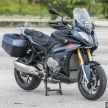
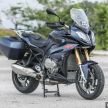
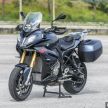
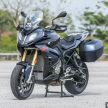
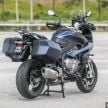
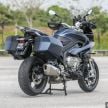
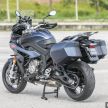
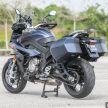
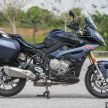
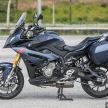
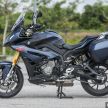
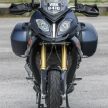
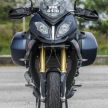
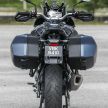
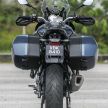
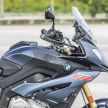
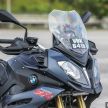
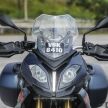
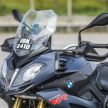
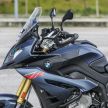
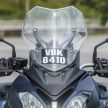
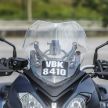


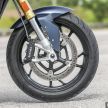
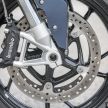
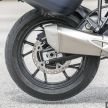
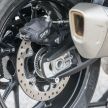
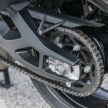
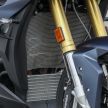
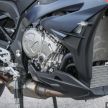
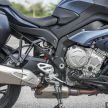
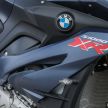
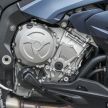
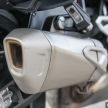
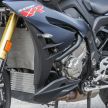
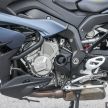
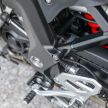
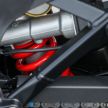
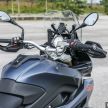

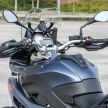

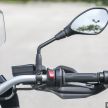
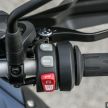
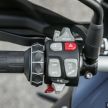
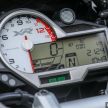
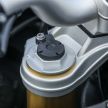
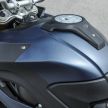
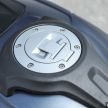
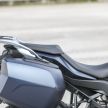
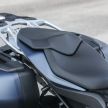
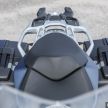
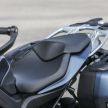
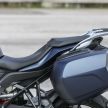
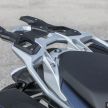
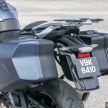
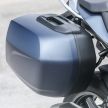
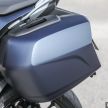
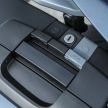
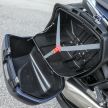

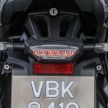
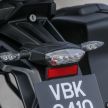

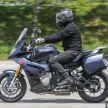
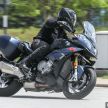

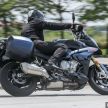
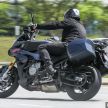










Lucky prices have gone down with ZERO GST. At least these bikes are affordable now.
Last time collect so much of GST also….don’t know where the money went.
“..new helmets were purchased..”
Any excuse for new gear haha!
I like the bike video content, machine close up, varying angle views and all. But the host in full riding suit walking awkwardly is not filming material. Perhaps keep the talks but show just the bikes or video ’em all while riding. Or just jeans / pants and shirt will do if it’s not a riding shot. Sorry I’m harsh.
Very handsome bikes indeed!
Great stuff…Thanks
I have a Ocean Mat Blue S1000XR exactly as in the pics…but where did you get the colour coded panniers?! Can’t find them anywere in the uk!!
In Europe the S and the XR have the same BHP for 2018, the S carried it over from 2017 and the revised 2018 XR has been updated to 165 BHP as well.